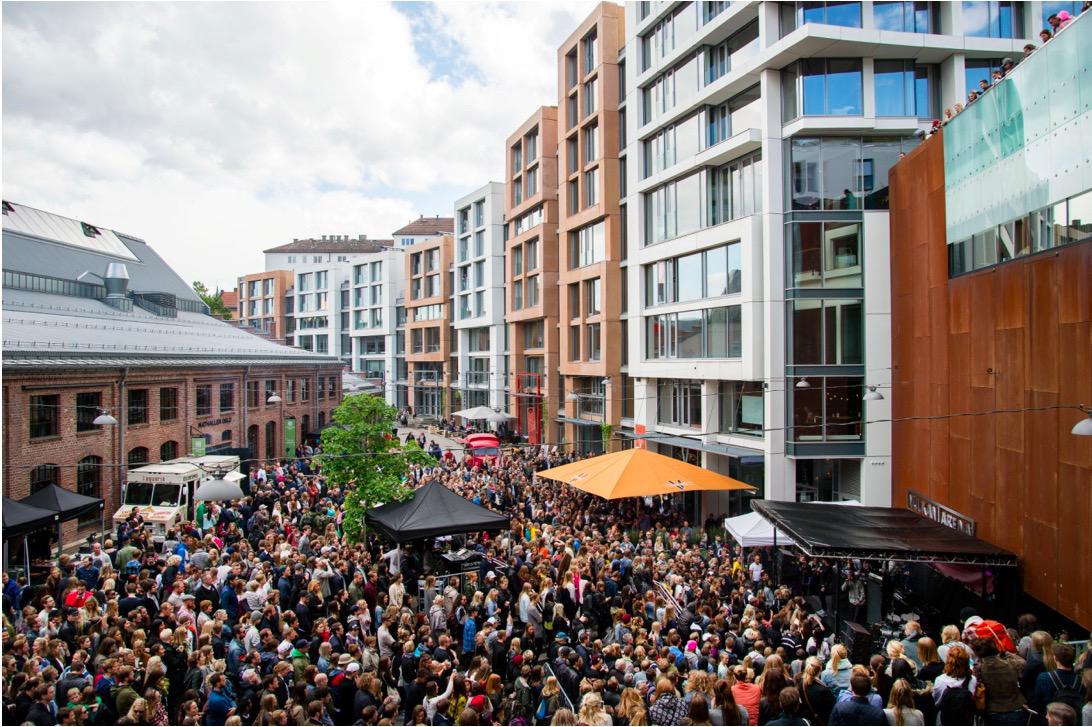VULKAN MIXED USE DEVELOPMENT, OSLO, NORWAY

PROJECT DESCRIPTION
The Vulkan Factory is a former foundry located beside the Akerselva river in Oslo. When the foundry closed in the 1960s, the site was used for storage and craft businesses, sealed off from the rest of the city. The redevelopment of the Vulkan site started in 2004 with high ambitions of sharing land and resources in a dense and multifunctional area. Vulkan is now reconnected to the river and links two neighbourhoods. The buildings there are an interesting mix of new and old, giving identity to the new neighbourhood. The mixed use result is impressive compared to other projects.
Envisioning
The location, the topography and the people’s perception of the place made the developer think that he needed to create a place. He took one very important decision: to set out a strategy to make a ‘little city’ within the city, based on a strong belief in four elements: culture, education, food and sports. This led to a mixed use development. Also important was the decision to be environmentally ambitious. Today Vulkan is virtually self-sufficient energy-wise, for both heating and cooling.
Mainstreaming: integrating management
There are different kinds of developers. The developer involved here has a long-term-vision and is used to staying on board for longer periods of time. For this developer a project is not finished when the buildings are built. An area takes time to evolve. They therefore did not sell every space, but rented out most of the functions except for the apartments which, in accordance with normal practice in Norway, are owner-occupied. By keeping the more vulnerable programs in ownership the developer is committed to the quality and use of these programs that are crucial for the attractiveness of the area in the long run.
Financing: alternative financing
Finally sharing of services and spaces was facilitated, as in the car sharing arrangement. The developer encouraged offices to use the lunch and dinner restaurant of the PS:hotel as a canteen. This serves to reduce the size of offices and the PS:hotel gets a larger turnover. The Dansens Hus conference spaces can be rented by the hotels.
LESSONS LEARNED / RESULTS
By keeping ownership and working in an integral way extra investments in quality are profitable in other areas of the project. For example: preserving and maintaining the old Mathallen is profitable when we add up the indirect impact on the hotels, on parking revenue and the increased demand it is creating for office space.
Sharing (of energy, for instance) is easier in a mixed-use area, simply because different users may have complementary needs.
Especially for commercial functions, it is essential that there is one owner only, or alternatively several owners, but with a common management or at least common visions and goals.
Buildings are divided into different legal entities to provide for flexibility in the future structure of ownership. One or more offices or residential units may be sold while the developer retains ownership of the retail sections, which are accessible to the public. This provides the flexibility to shift spaces and functions within the project.
DATA
City information
Population size: 501 th - 1 mPopulation development dynamics within the city administrative limits (at the time of the project): Growing
Population development dynamics of the functional urban area (at the time of the project): Growing
Website of the city: https://www.oslo.kommune.no/english/#gref
Project information
Project territorial scale:
NeighbourhoodProject geographical area: Periphery of the city
Project/building proportions: No data/not applicable; Project Area: 1-5 ha
Project main actors: City Government; Investors, private businesses; 0
Project dominant property ownership: Private
Project development stage (at the time of description): Completely finished
Project duration: No data/not applicable
Project starting date: Before 2010



